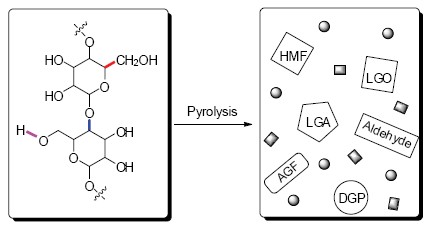化学学报 ›› 2013, Vol. 71 ›› Issue (12): 1611-1619.DOI: 10.6023/A13070765 上一篇 下一篇
研究论文
蒋原野a, 于海珠b, 傅尧a
Jiang Yuanyea, Yu Haizhub, Fu Yaoa

纤维素是生产生物质燃料,精细化工品的重要原料. 热解是由纤维素解聚的重要手段之一. 了解纤维素热解的反应机理对发展高效的生物质转化技术具有重要意义. 我们利用密度泛函理论方法,以纤维素二聚体为模型,详细研究了其发生键均裂过程的热力学能量变化. 发现糖苷键和侧链C—C键的均裂相对于C—OH键和O—H键均裂在热力学上更优. 此外,我们发现不同物种的热力学稳定性与其在纤维素快速热解实验产物中的比例无关. 最后我们发现温度对反应能否自发发生具有重要的影响,为通过调节温度来改变不同类型反应的选择性提供了一条思路.